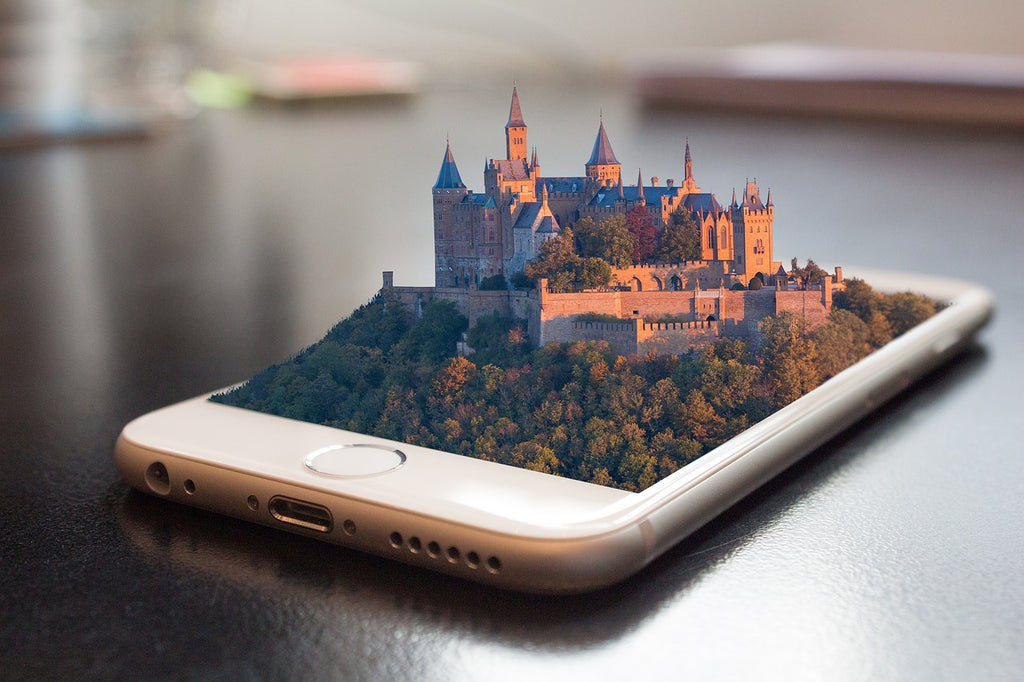The first smartphone was developed in 1992 by IBM called the Simon Personal Communicator. The Simon Personal Communicator offered a thin Monochrome LCD touchscreen with minimal capabilities and resembled a modern walkie-talkie. In just two decades, humans have designed smartphones with elegant designs and hundreds of features, like integrated cameras and GPS. Despite the massive development, this rapid rate indicates we can expect a lot more from smartphone technologies in the next few decades as companies like Apple, Google, and Samsung introduce new features every year.

Image Source- (Rob Stothard/Getty Images)
Some of the new features that we expect to see in the near future smartphones are enhanced face scanning, augmented reality, flexible screens, and motion and solar charging.
1. Facial Scanning

Image Source - (Intel)
From passwords to fingerprints, the security your smart device has seen some major upgrades. Now with iPhone X's facial scanning technology, we can expect to see this feature being developed and implemented into all smartphone models.
Qualcomm’s Spectra, which is a depth-sensing camera system that uses the uniqueness of one’s facial structure to recognize the owner of the phone and allow them access. The Spectra System performs this task by spraying an object with infrared dots to gather information about the unique contours of a user’s face. The depth of the user’s face is analyzed with smaller dots to represent a shorter distance between the camera and the person, and the opposite correlation for larger dots. The pattern of the dots are put together and turned into a 3D image that determines the owner of the phone.
We consider facial scanning an inclusive technology allowing better accessibility for individuals with fine-motor impairments. More enhanced versions of facial scanning will make sure that more users with disabilities will take advantage of mobile technologies by eliminating the need to interact with a touch-based interface.
2. Augmented Reality

Image Source - (Apple)
Augmented Reality (AR) is technology that combines virtual reality, a virtual world that creates a realistic environment for users and gamers to interact with, with the real world in the form of live video imagery that is digitally enhanced with graphics. This technology has to potential to offer people with disabilities a more accessible environment as many real objects can be interacted with on a smartphone. Virtual reality can digitalize their presence in space, where they can interact with objects to perform various tasks. Check out our previous blog about AR and accessibility.
Ikea’s Place App allows customers to select any type of furniture from their catalogue and place it their home floor or any other space your camera is aimed at through your smartphone. You can move it around and visually see if the piece isn’t too big or too small in your space and can see if you’ll be happy before you buy it.
In Fall 2017, Apple released ARKit: a toolkit for app developers to create augmented-reality applications, that is supported on the iOS 11. iPhone’s camera and motion sensors such as the accelerometer and gyroscope will make the use of augmented reality accessible for all through mobile technology.
3. Flexible Screens

Image Source - (LG)
The next feature that will literally shape the future smartphones and other smart devices are the flexible screens that use Organic Light-Emitting Diode (OLED) Technology.
The use of thin films of organic molecules provides brighter and crispier display and use less power than conventional displays. What enables the flexibility in devices made from OLEDs is the use of a plastic substrate, which will significantly reduce the devices’ weight and allow for easier portability.
In application, the smartphone’s ability to fold and increase in size allows you to have the whole package in one mobile device. The device would be able to adapt from a smartphone to a slightly bigger gaming device to even a larger tablet.
4. Motion and Solar Charging

Imagine being able to leverage your morning exercise or the movement of your wheelchair to charge your phone, never having to plug it into a nearby outlet. This will be made possible with the integration of motion and solar charging in future smartphones.
Motion charging uses kinetic energy from a person’s or an object’s movement to charge a battery cell. This technology is currently only available for some wearable devices like Alta. If this technology were to be implemented into smartphones, it would be accessible to millions of users.
Apple has been hinting at implementing solar charging into their devices since they have committed to a greener approach in 2015. Their patent suggests that Apple is planning to build solar cells underneath the touch screen in smartphones in the future.
We can expect to see these technologies and more incredible features for our smartphones in the next several decades. As we ask questions like how future smartphones will look, what new functions and capabilities will they introduce, and how these devices will be made accessible for all, we can imagine a future where communication knows no boundaries.
Top image from Packageslife.com



Leave a comment: